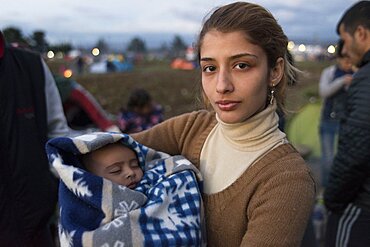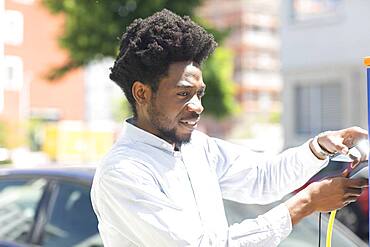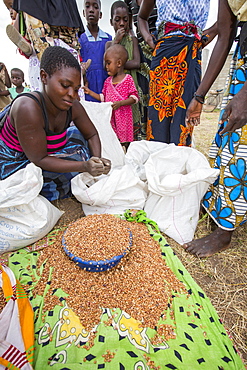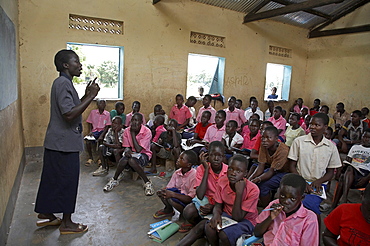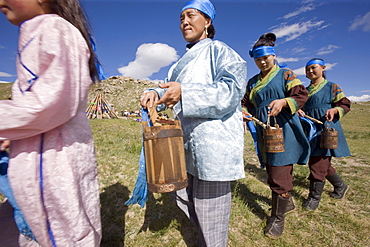Recent searches
Loading...
832-394569 - Young black man working at desk in office, Freiburg, Baden-Wuerttemberg, Germany, Europe
832-394565 - Young black man reconsiders a vision or innovation in the office, Freiburg, Baden-Wuerttemberg, Germany, Europe
832-394566 - Young black man with sample reconsiders a vision or innovation in the office, Freiburg, Baden-Wuerttemberg, Germany, Europe
832-394564 - Young black man reconsiders a vision at the window with pen and great innovation, Freiburg, Baden-Wuerttemberg, Germany, Europe
832-392710 - Student with Afro look learning in library, Freiburg, Baden-Wuerttemberg, Germany, Europe
832-392719 - Young black man working outside as technician with helmet and safety vest, Freiburg, Baden-Wuerttemberg, Germany, Europe
832-392720 - Young man, outside, standing with folded arms in front of a wall, Freiburg, Baden-Wuerttemberg, Germany, Europe
832-392713 - Young black man working outside as technician with helmet and safety vest, Freiburg, Baden-Wuerttemberg, Germany, Europe
832-392712 - Young black man working outside as technician with helmet and safety vest, Freiburg, Baden-Wuerttemberg, Germany, Europe
832-392714 - Young black man working outside as technician with helmet and safety vest, Freiburg, Baden-Wuerttemberg, Germany, Europe
832-392722 - Young man standing outside and renting a bike, Freiburg, Baden-Wuerttemberg, Germany, Europe
832-392718 - Young black man working outside as technician with helmet and safety vest, Freiburg, Baden-Wuerttemberg, Germany, Europe
832-392721 - Young man standing outside in nice weather, Freiburg, Baden-Wuerttemberg, Germany, Europe
832-392717 - Young black man working outside as technician with helmet and safety vest, Freiburg, Baden-Wuerttemberg, Germany, Europe
832-392715 - Young black man working outside as technician with helmet and safety vest, Freiburg, Baden-Wuerttemberg, Germany, Europe
832-392716 - Young black man working outside as technician with helmet and safety vest, Freiburg, Baden-Wuerttemberg, Germany, Europe
832-392723 - Young man standing outside checking car electric charging station, Freiburg, Baden-Wuerttemberg, Germany, Europe
832-392711 - Young black man working outside as technician with helmet and safety vest, Freiburg, Baden-Wuerttemberg, Germany, Europe
832-391686 - Soria Moria Sauna, Dalen, Telemark, Norway, Europe
832-389323 - Mohammed Ashfaq, 19 years, from Pakistan, refugee, Belgrade, Serbia, Europe
832-389296 - Canned beans, meal in a shelter of a refugee, Belgrade, Serbia, Europe
832-389303 - Wild vegetables in a pot around the campfire of a family of refugees in the camp Idomeni, Greece, Europe
832-389321 - Fugitive, from Afghanistan, Belgrade, Serbia, Europe
832-389325 - Mohammed Ashfaq, 19 years, from Pakistan, refugee, Belgrade, Serbia, Europe
832-389317 - Fugitive, from Afghanistan, Belgrade, Serbia, Europe
832-389320 - Bilal, refugee, from Afghanistan, Belgrade, Serbia, Europe
832-389298 - Coffee on campfire, prepared by refugees in the camp Idomeni, Greece, Europe
832-389316 - Fugitive, from Afghanistan, Belgrade, Serbia, Europe
832-389318 - Fugitive, from Afghanistan, Belgrade, Serbia, Europe
832-389319 - Bilal, refugee, from Afghanistan, Belgrade, Serbia, Europe
832-389297 - Escaped man plucks stale bread for a meal, Belgrade, Serbia, Europe
832-389322 - Girls, refugee camp in Sid, Serbia, Europe
832-389301 - Potato pot, meal of a family of refugees in the camp Idomeni, Greece, Europe
832-389324 - Mohammed Ashfaq, 19 years, from Pakistan, refugee, Belgrade, Serbia, Europe
832-389302 - Tomatoes on a tray, meal of a family of refugees in the camp Idomeni, Greece, Europe
832-389300 - Pea soup on campfire, prepared by refugees in the camp Idomeni, Greece, Europe
832-389299 - Rice soup for refugees in the camp Idomeni, Greece, Europe
832-389327 - Fugitive, from Afghanistan, Belgrade, Serbia, Europe
1184-3580 - Children in a refugee camp in Agadez, Niger, West Africa, Africa
832-382445 - Woman and children in a ramshackle hut, Camp Icare, camp for earthquake refugees, Fort National, Port-au-Prince, Haiti, Central America
832-382443 - Women braiding plaits, Camp Icare, camp for earthquake refugees, Fort National, Port-au-Prince, Haiti, Central America
832-379943 - Woman in front of tent, refugee camp Idomeni on the Greek-Macedonian border, Greece, Europe
911-10902 - In mid January 2015, a three day period of excessive rain brought unprecedneted floods to the small poor African country of Malawi. It displaced nearly quarter of a million people, devastated 64,000 hectares of land, and killed several hundred people. This shot shows displaced people dividing up food aid in a refugee camp near Phalombe.
911-10903 - In mid January 2015, a three day period of excessive rain brought unprecedented floods to the small poor African country of Malawi. It displaced nearly quarter of a million people, devastated 64,000 hectares of land, and killed several hundred people. This shot shows displaced children in Baani refugee camp near Phalombe.
911-10901 - In mid January 2015, a three day period of excessive rain brought unprecedneted floods to the small poor African country of Malawi. It displaced nearly quarter of a million people, devastated 64,000 hectares of alnd, and killed several hundred people. This shot shows a mother and child in Chiteskesa refugee camp, near Mulanje.
911-10904 - In mid January 2015, a three day period of excessive rain brought unprecedented floods to the small poor African country of Malawi. It displaced nearly quarter of a million people, devastated 64,000 hectares of land, and killed several hundred people. This shot shows displaced people in Baani refugee camp near Phalombe, preparing pumpkin flowers to eat.
911-10900 - In mid January 2015, a three day period of excessive rain brought unprecedneted floods to the small poor African country of Malawi. It displaced nearly quarter of a million people, devastated 64,000 hectares of alnd, and killed several hundred people. This shot shows a displaced women carrying water in the refugee camp of Chiteskesa refugee camp, near Mulanje.
911-10893 - In mid January 2015, a three day period of excessive rain brought unprecedneted floods to the small poor African country of Malawi. It displaced nearly quarter of a million people, devastated 64,000 hectares of alnd, and killed several hundred people. This shot shows a food being ferried across a river near Phalombe after the bridge was washed away.
857-90399 - A female student is photographed at the Kiziba Refugee Camp in Kibuye, Rwanda.
1161-7773 - Croatian women escape the fighting in Yugoslavia as refugees in Hungary, wearing traditional widow's black clothing
857-67158 - A LAotian-American female monk with shaved head makes an offering of rice during worship as the Laotian American community celebrates the Buddhist new year by gathering at a property in suburban East Hartford Connecticut on April 28, 2007. Several shrines are set up on the property. The celebrants leave offerings of food, flowers and money, pray, dance, and feast for a day. Immigrants from Laos, including the Hmong people, are refugees from the Vietnam War era, when they helped United States in the war.
1188-275 - Refugee camp, algeria. Woman fetching water at the polisario smara camp
1188-265 - Western sahara. Women and children carrying gas bottles. Polisario smara camp.
1194-2412 - East timor. Camp for internally displaced people (idps) in the old hospital at baucau. Jacinta marques, and old woman and children at the camp
1194-2483 - South sudan lutaya primary school, constructed and financed by jesuit refugee services since 2005, yei. lesson taking place in one of the classrooms. some classes have over 100 children. most classes do not have desks or seats. children often bring their own stools to sit on
1196-27 - Horse milk is sprinkled into the four directions, as offerings to the nature spirits of the area, the sadak, or ?owners Of the earth.? Sometimes vodka is used instead, or as well. Milk is sacred to the mongol shamans, who believe that life on earth is descended from beings who originally came here on winged horses. Here two young female shamans make the offering in a ritual manner. Countryside mongols make this offering every morning on waking up; they usually also offer smoke, that the wind carries around the world as a prayer for harmony and prosperity. 13th century national park, tov province, mongolia. 13th century national park comprises chinggis khan's giant statue museum and live museum "town from 13 century". The ancient nomadic mini kingdom is located in the distance of 130 km east of ulaanbaatar in area of erdene zuu of tov province. It takes 2 hours driving on paved road. In the live 13th century kingdom one will see and experience the authentic lifestyle of mongols, who were lived in powerful mongol empire?s Period. This place gives you a same feeling that famous traveler marco polo and william rubruck felt once upon time
1195-12 - Kenya,dadaab refugees camp, somalian border gtz hospital ,the camps were set up around the town of dadaab beginning in 1991 when civil wars erupted on a grand scale in somalia (16 rival factions were involved). The wars, along with a prolonged drought, forced more than 900,000 somalis to flee to neighboring countries. Approximately 400,000 of them, many of whom were in a serious state of exhaustion and starvation, took refuge in kenya. Since then, a majority have returned to their country. However, some 131,000 somalis remain in kenya, and 110,000 are in dadaab, along with some sudanese, ugandans, and about 3,000 ethiopians women waiting the receive care from gtz ngo at the local hospital
1195-76 - Hardest hit was a 650 kilometers stretch of the somali coastline between garacad (mudung region) and xaafuun (bari region), which forms part of the puntland province near the horn of africa. The tsunami resulted in the death of some 300 people and extensive destruction of shelters, houses and water sources as well as fishing gear. The livelihoods of many people residing in towns and small villages along the somali indian ocean coastline, particularly in the northern regions, were devastated
1196-13 - Horse milk is sprinkled into the four directions, as offerings to the nature spirits of the area, the sadak, or ?owners Of the earth.? Sometimes vodka is used instead, or as well. Milk is sacred to the mongol shamans, who believe that life on earth is descended from beings who originally came here on winged horses. Here two young female shamans make the offering in a ritual manner. Countryside mongols make this offering every morning on waking up; they usually also offer smoke, that the wind carries around the world as a prayer for harmony and prosperity. 13th century national park, tov province, mongolia. 13th century national park comprises chinggis khan's giant statue museum and live museum "town from 13 century". The ancient nomadic mini kingdom is located in the distance of 130 km east of ulaanbaatar in area of erdene zuu of tov province. It takes 2 hours driving on paved road. In the live 13th century kingdom one will see and experience the authentic lifestyle of mongols, who were lived in powerful mongol empire?s Period. This place gives you a same feeling that famous traveler marco polo and william rubruck felt once upon time
1194-2406 - East timor. Camp for internally displaced people (idps) at the don bosco center in dili. Mother and child
1195-73 - Hardest hit was a 650 kilometers stretch of the somali coastline between garacad (mudung region) and xaafuun (bari region), which forms part of the puntland province near the horn of africa. The tsunami resulted in the death of some 300 people and extensive destruction of shelters, houses and water sources as well as fishing gear. The livelihoods of many people residing in towns and small villages along the somali indian ocean coastline, particularly in the northern regions, were devastated
1196-69 - Horse milk is sprinkled into the four directions, as offerings to the nature spirits of the area, the sadak, or ?owners Of the earth.? Sometimes vodka is used instead, or as well. Milk is sacred to the mongol shamans, who believe that life on earth is descended from beings who originally came here on winged horses. Here two young female shamans make the offering in a ritual manner. Countryside mongols make this offering every morning on waking up; they usually also offer smoke, that the wind carries around the world as a prayer for harmony and prosperity. 13th century national park, tov province, mongolia. 13th century national park comprises chinggis khan's giant statue museum and live museum "town from 13 century". The ancient nomadic mini kingdom is located in the distance of 130 km east of ulaanbaatar in area of erdene zuu of tov province. It takes 2 hours driving on paved road. In the live 13th century kingdom one will see and experience the authentic lifestyle of mongols, who were lived in powerful mongol empire?s Period. This place gives you a same feeling that famous traveler marco polo and william rubruck felt once upon time
1195-11 - Kenya,dadaab refugees camp, somalian border gtz hospital ,the camps were set up around the town of dadaab beginning in 1991 when civil wars erupted on a grand scale in somalia (16 rival factions were involved). The wars, along with a prolonged drought, forced more than 900,000 somalis to flee to neighboring countries. Approximately 400,000 of them, many of whom were in a serious state of exhaustion and starvation, took refuge in kenya. Since then, a majority have returned to their country. However, some 131,000 somalis remain in kenya, and 110,000 are in dadaab, along with some sudanese, ugandans, and about 3,000 ethiopians women waiting the receive care from gtz ngo at the local hospital
1194-1063 - Thailand our school muslim school for burmese refugees, mae sot
1196-210 - Horse milk is sprinkled into the four directions, as offerings to the nature spirits of the area, the sadak, or ?owners Of the earth.? Sometimes vodka is used instead, or as well. Milk is sacred to the mongol shamans, who believe that life on earth is descended from beings who originally came here on winged horses. Here two young female shamans make the offering in a ritual manner. Countryside mongols make this offering every morning on waking up; they usually also offer smoke, that the wind carries around the world as a prayer for harmony and prosperity. 13th century national park, tov province, mongolia. 13th century national park comprises chinggis khan's giant statue museum and live museum "town from 13 century". The ancient nomadic mini kingdom is located in the distance of 130 km east of ulaanbaatar in area of erdene zuu of tov province. It takes 2 hours driving on paved road. In the live 13th century kingdom one will see and experience the authentic lifestyle of mongols, who were lived in powerful mongol empire?s Period. This place gives you a same feeling that famous traveler marco polo and william rubruck felt once upon time
1196-105 - Horse milk is sprinkled into the four directions, as offerings to the nature spirits of the area, the sadak, or ?owners Of the earth.? Sometimes vodka is used instead, or as well. Milk is sacred to the mongol shamans, who believe that life on earth is descended from beings who originally came here on winged horses. Here two young female shamans make the offering in a ritual manner. Countryside mongols make this offering every morning on waking up; they usually also offer smoke, that the wind carries around the world as a prayer for harmony and prosperity. 13th century national park, tov province, mongolia. 13th century national park comprises chinggis khan's giant statue museum and live museum "town from 13 century". The ancient nomadic mini kingdom is located in the distance of 130 km east of ulaanbaatar in area of erdene zuu of tov province. It takes 2 hours driving on paved road. In the live 13th century kingdom one will see and experience the authentic lifestyle of mongols, who were lived in powerful mongol empire?s Period. This place gives you a same feeling that famous traveler marco polo and william rubruck felt once upon time
1195-75 - Hardest hit was a 650 kilometers stretch of the somali coastline between garacad (mudung region) and xaafuun (bari region), which forms part of the puntland province near the horn of africa. The tsunami resulted in the death of some 300 people and extensive destruction of shelters, houses and water sources as well as fishing gear. The livelihoods of many people residing in towns and small villages along the somali indian ocean coastline, particularly in the northern regions, were devastated
1196-101 - Horse milk is sprinkled into the four directions, as offerings to the nature spirits of the area, the sadak, or ?owners Of the earth.? Sometimes vodka is used instead, or as well. Milk is sacred to the mongol shamans, who believe that life on earth is descended from beings who originally came here on winged horses. Here two young female shamans make the offering in a ritual manner. Countryside mongols make this offering every morning on waking up; they usually also offer smoke, that the wind carries around the world as a prayer for harmony and prosperity. 13th century national park, tov province, mongolia. 13th century national park comprises chinggis khan's giant statue museum and live museum "town from 13 century". The ancient nomadic mini kingdom is located in the distance of 130 km east of ulaanbaatar in area of erdene zuu of tov province. It takes 2 hours driving on paved road. In the live 13th century kingdom one will see and experience the authentic lifestyle of mongols, who were lived in powerful mongol empire?s Period. This place gives you a same feeling that famous traveler marco polo and william rubruck felt once upon time
1194-1064 - Thailand muslim school for burmese refugees, mae sot
1195-3 - Kenya,dadaab refugees camp, somalian border gtz hospital ,the camps were set up around the town of dadaab beginning in 1991 when civil wars erupted on a grand scale in somalia (16 rival factions were involved). The wars, along with a prolonged drought, forced more than 900,000 somalis to flee to neighboring countries. Approximately 400,000 of them, many of whom were in a serious state of exhaustion and starvation, took refuge in kenya. Since then, a majority have returned to their country. However, some 131,000 somalis remain in kenya, and 110,000 are in dadaab, along with some sudanese, ugandans, and about 3,000 ethiopians women waiting the receive care from gtz ngo at the local hospital
1195-7 - Kenya,dadaab refugees camp, somalian border gtz hospital ,the camps were set up around the town of dadaab beginning in 1991 when civil wars erupted on a grand scale in somalia (16 rival factions were involved). The wars, along with a prolonged drought, forced more than 900,000 somalis to flee to neighboring countries. Approximately 400,000 of them, many of whom were in a serious state of exhaustion and starvation, took refuge in kenya. Since then, a majority have returned to their country. However, some 131,000 somalis remain in kenya, and 110,000 are in dadaab, along with some sudanese, ugandans, and about 3,000 ethiopians women waiting the receive care from gtz ngo at the local hospital
1195-4 - Kenya,dadaab refugees camp, somalian border gtz hospital ,the camps were set up around the town of dadaab beginning in 1991 when civil wars erupted on a grand scale in somalia (16 rival factions were involved). The wars, along with a prolonged drought, forced more than 900,000 somalis to flee to neighboring countries. Approximately 400,000 of them, many of whom were in a serious state of exhaustion and starvation, took refuge in kenya. Since then, a majority have returned to their country. However, some 131,000 somalis remain in kenya, and 110,000 are in dadaab, along with some sudanese, ugandans, and about 3,000 ethiopians women waiting the receive care from gtz ngo at the local hospital
1195-74 - Hardest hit was a 650 kilometers stretch of the somali coastline between garacad (mudung region) and xaafuun (bari region), which forms part of the puntland province near the horn of africa. The tsunami resulted in the death of some 300 people and extensive destruction of shelters, houses and water sources as well as fishing gear. The livelihoods of many people residing in towns and small villages along the somali indian ocean coastline, particularly in the northern regions, were devastated
1195-13 - Kenya,dadaab refugees camp, somalian border gtz hospital ,the camps were set up around the town of dadaab beginning in 1991 when civil wars erupted on a grand scale in somalia (16 rival factions were involved). The wars, along with a prolonged drought, forced more than 900,000 somalis to flee to neighboring countries. Approximately 400,000 of them, many of whom were in a serious state of exhaustion and starvation, took refuge in kenya. Since then, a majority have returned to their country. However, some 131,000 somalis remain in kenya, and 110,000 are in dadaab, along with some sudanese, ugandans, and about 3,000 ethiopians women waiting the receive care from gtz ngo at the local hospital
1194-2409 - East timor. Camp for internally displaced people (idps) at the don bosco center in dili
1194-2404 - East timor. Camp for internally displaced people (idps) at the don bosco center in dili. Woman with her children
1194-2407 - East timor. Camp for internally displaced people (idps) at the don bosco center in dili. Girl collecting water and washing baby at faucet
1194-1042 - Thailand kathy, a philippino singer and her baby, phuket
975-147 - An IDP camp (internally displaced people) in Te-Tugu district of Northern Uganda has been created to accommodate the mass of Ugandan refugees fleeing the LRA (Lords Resistance Army) who are fighting the Ugandan government and its people. Although heavily reliant on aid, they are encouraged to produce much of their own food. Te-Tugu, Uganda, East Africa
975-48 - An IDP camp (internally displaced people) in Te-Tugu district of Northern Uganda has been created to accommodate the mass of Ugandan refugees fleeing the LRA (Lords Resistance Army) who are fighting the Ugandan government and its people. Children are plentiful in these camps and are far safer here than neighbouring villages. Te-Tugu, Uganda, East Africa
975-140 - An IDP camp (internally displaced people) in Te-Tugu district of Northern Uganda has been created to accommodate the mass of Ugandan refugees fleeing the LRA (Lords Resistance Army) who are fighting the Ugandan government and its people. Although accommodation is basic- mainly mud huts, they are impeccably maintained, instilling a real sense of pride in the community. Te-Tugu, Uganda, East Africa
975-139 - An IDP camp (internally displaced people) in Amuru district of Northern Uganda has been created to accommodate the mass of Ugandan refugees fleeing the LRA (Lords Resistance Army) who are fighting the Ugandan government and its people. Here are some of the many children from the camp showing off in front of camera. Amuru, Uganda, East Africa
975-38 - An IDP camp (internally displaced people) in Amuru district of Northern Uganda has been created to accommodate the mass of Ugandan refugees fleeing the LRA (Lords Resistance Army) who are fighting the Ugandan government and its people. Accommodation are basic mud huts, but always well kept. Amuru, Uganda, East Africa
975-34 - An IDP camp (internally displaced people) in Te-Tugu district of Northern Uganda has been created to accommodate the mass of Ugandan refugees fleeing the LRA (Lords Resistance Army) who are fighting the Ugandan government and its people. With all attempts to be self-sufficient in these camps, the women have to work the land as well as look after dependants. Te-Tugu, Uganda, East Africa
465-869 - Stilt house built by Philippino refugees on east coast of Borneo by Bajau people, Mabul Island, Sabah, Malaysia, island of Borneo, Southeast Asia, Asia
352-228 - Paduang woman (Long-necked people) (Long-Necked Karen), Mae Hong Son, Thailand, Southeast Asia, Asia
312-1880 - Padaung lady (Long-Necked Karen), Shan State, Myanmar (Burma), Asia
188-4471 - Paduang woman (Long-necked people) (Long-Necked Karen), Thai/Burma border Thailand, Southeast Asia, Asia
312-1879 - Padaung lady washing brass band, Shan State, Myanmar (Burma), Asia
640-1997 - Water in Somali refugee camp, Ziziga, Ethiopia, Africa
You reached the end of search results











